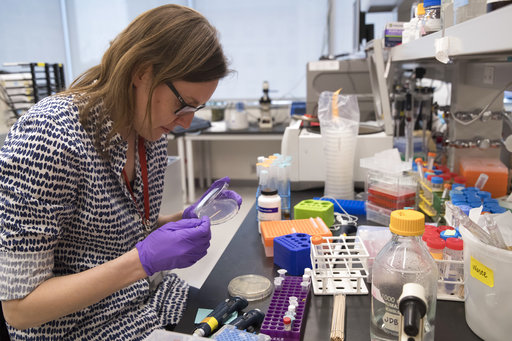Cheap DNA Sequencing Is Here, Writing DNA Is Next
At Twist Bioscience's San Francisco office, CEO Emily Leproust pulled two things from her tote bag that she carries with her everywhere: a standard 96-well plastic plate ubiquitous in biology labs, and her company's invention. , a silicon wafer studded with a similar number of nanowells. .
Twist's argument is that she has drastically reduced the equipment to synthesize DNA in a laboratory, making the process cheaper and faster. As Leproust delivered her spiel, I looked from the plastic jankety plate, the size of two decks of cards side by side, to the elegant stamp-sized wafer of silicone and nodded politely. Then she handed me a magnifying glass to look through the wafer nano-wells. Inside each nanowell were another 100 microscope holes.
That's when I really got it. The 96-well plate was not wafer equivalent, the entire plate was equivalent to a nano-well on the wafer. To put a number on it, traditional DNA synthesis machines can produce one gene per 96-well plate; Twist's machine can produce 10,000 genes on a silicon wafer the same size as the plate.
How to make DNA in a laboratory

Making DNA, writing the "code of life" may sound great, but in practice, it is a tedious process of moving small amounts of liquid from one place to another. DNA is a long molecule, and writing DNA is adding the correct chemicals (sugary building blocks designated A, T, C, and G) in the correct order hundreds of times. Before co-founding Twist in 2013, Leproust had spent more than a decade thinking about how to scale up this process for Agilent Technologies, a laboratory technology company spun off from Hewlett-Packard.
All DNA synthesis has two basic steps: making short pieces of DNA, called oligonucleotides, or "oligos" for short, and then using enzymes to join the oligos together. The classic method, which has been around since the 1980s, uses the 96-well plate that Leproust showed me. A machine spits out building blocks of DNA into each well in sequence, and an oligo enters each well. (Oligonucleotides are typically 100 letters long, so a 1000 letter gene takes up an entire plate.) But because the wells are so big, you get a lot of DNA - "millions more than you need," says Alan Blanchard. that he helped develop a DNA synthesis system that was later awarded to Agilent. And it wastes a lot of expensive chemicals.
However, in recent years, companies like Agilent have moved away from the old workhorse plate in favor of microarrays, which they can use to make tens of thousands of oligos at once, synthesizing them on a piece of glass the size of a microscope slide. , directed with a precise inkjet nozzle. Microarrays have the opposite problem to the classic method: you now have many unique oligos, but only a small number of each. Then you need an extra step to make more copies. This is the technique that Blanchard helped develop initially, and that Leproust and one of his co-founders, Bill Peck, perfected while at Agilent.
Leproust, Peck, and a third co-founder, Bill Banyai, realized that DNA synthesis needed a middle ground between the classical method and microarrays. Thus, the holes within the Twist wafer nanowells are essentially thousands of reasonably sized test tubes. You end up with the right amount of oligos, not too much, not too little.
In addition, the silicon wafer is cleverly optimized for the second step of gene synthesis, oligo binding, because Twist engineers discovered how to reduce the movement of small volumes of liquid. Twist's proprietary machine, a system the size of a small car that WIRED was unable to photograph, deposits an oligo in each of approximately 100 holes within a nanowell. In a 96-well plate, you would have to suck up the 96-well liquid to combine it with the appropriate enzymes. With microarrays, you would release the oligos from the glass plates and combine them with the stitching enzymes. But due to the nested design of the nanowells, Twist can add enzymes and then combine all the oligos that are already in a nanowell. Every step occurs on the silicon wafers.
